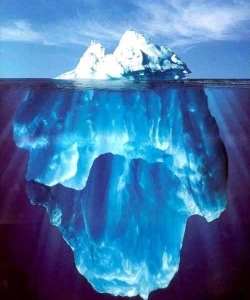By Michael Nagler and Stephanie Van Hook

“Our highest self is our real self.”
-Michael Nagler-
At a seminar we recently taught for the Metta Center for Nonviolence’s Vice-President, Cynthia Boaz, we had a frustrating time ‘selling’ some of the students on the efficacy of nonviolence. Once again it caused us to reflect, why people cannot bring themselves to believe, in the face of mounting evidence, that there is a power with a proven track record and a growing body of theory behind it that people can use to gain freedom and right many kinds of wrongs without reproducing the destructiveness they seek to redress.
This is why:
Violence “works” by appealing to our instinct for self-preservation. People who use threat power are trying to get something for themselves; it may not be a matter of life or death in all cases, but you are after something you want, something you think you need to preserve or enhance your own life, if necessary at someone else’s expense. With enough advertising, we attempt to convince ourselves that we actually enjoy and find pleasure in essentially alienating behavior. Pushed to the extreme case, we believe without question that the idea of killing, instead of being killed, is infinitely more appealing: the emphasis of advertising on self-gratification and letting our impulses run amok only strengthens this belief. Of course there is a model of the world that leads you to this belief, namely that people are separate, material packages locked into a universe of competition for scarce (i.e., material) resources. This besetting idea of scarcity spreads even to resources that are by nature unlimited, like respect: you think you can get it by taking it from another, i.e. humiliating him or her. There is no doubt that this instinct and this vision (whichever comes first) is in every one of us, and it’s very strong.
Fortunately, it is not the only way we see the world or the only drive we can use to change it.
Nonviolence works by appealing to our instinct for self-sacrifice. Which is why Gandhi said that we become fulfilled by curbing, not pursuing, self-gratification for the benefit of the larger whole. The term ‘instinct’ has fallen out of use in most behavioral sciences today, but whatever term we use, our own experiences and a long and deep tradition of human wisdom confirms that an urge to help others, if necessary to sacrifice oneself for their well-being is also there, and if anything it is even deeper than the urge for self-preservation which, under the wrong circumstances, produces violence. According to a famous verse in the third chapter of the Bhagavad Gita (III.14), the world-process is a cycle whereby rain falls to nourish plants, plants become man’s food, man sacrifices to keep the cycle going: following this law established at the creation, the Lord says, ‘may you thrive.’ In a much-admired poem by Jalal ad-Din Rumi, evolution is described from the point of view of the self who transmigrates through the various stages of existence: ‘from mineral you became plant, from plant you became animal, from animal you became a human being, endowed with knowledge, intellect, and faith . . . when have you ever lost by dying?’ When we feel moved to give up something of ourselves for another — or for the life process in general — we are obeying a law that is embedded in the very nature of reality, of life itself. And it is not a real sacrifice, because just as the violent actor is acting out a particular vision, namely that we are all separate, that competition and ultimately violence are “normal,” the nonviolent actor, the satyagrahi (in Gandhian terms) is acting out a vision that we are all interconnected, if not actually in some way one. As Martin Luther King put it, “We are caught in an inescapable network of mutuality, tied in a single garment of destiny. Whatever affects one directly affects all indirectly.” Even in the few decades since Martin Luther King first wrote these words (in the Letter From Birmingham Jail, 1963), science has added powerful experimental support to this mutuality, in fields from quantum physics to neuroscience and psychology.
The tragedy that surfaced briefly in that seminar is that we are using the tools of culture — and these are powerful tools in this electronic age — to reflect back to ourselves, and thereby normalize and exacerbate, only the first, and more destructive instinct. The film “Titanic” vividly depicted the selfishness and cruelty of men in the panic for self-preservation on the sinking vessel. Yet to this day there stands on the New Jersey shore a plaque that is lovingly dedicated by the women survivors to the men of the Titanic who gave up their own lives to save them.
Are we the only ones who feel that this plaque is more thrilling than the grubby illusion created in its stead by a hit movie? Probably not, for we know that behind the thrill lies a glimpse of our highest human potential. While we who believe that we can actually use nonviolence to convert our negative drives into positive, constructive and healthy ones are in a minority at present, there is no reason to be daunted by the challenge before us, because the first myth to fall away when we become aware of our nonviolent potential is that we are not as powerless as we were taught to believe.
This is why at Metta we have long felt that boycotting media that present a demoralizing — and false — image of humanity, and instead learning everything we can about nonviolence is crucial to not only our personal sanity but human progress.














